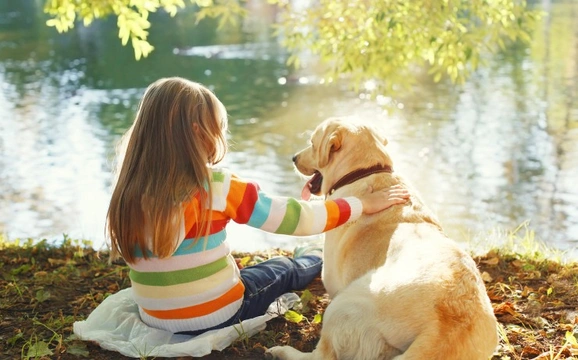Pets
Pets for studWanted petsBreedersAccessories & services
Knowledge hub
Support
Support & safety portal
Keeping Children Safe Around Dogs
It goes without saying that sharing a home with a pet, whether it's a dog, cat or other small animal is incredibly rewarding for both adults and children. For the kids it's a great way for them to learn about responsibility at a young age. However, it's important for children to have a positive experience when they are around any sort of animal which means grown up supervision is essential at all times.
Fortunately, dog attacks on children are pretty rare considering the number of dogs kept as pets in the country, but with this said, sadly it happens which is devastating. As a nation of animal lovers, it's important to understand the dynamics of why these incidents occur to better understand our pets and more especially dogs.
All too often dogs are misunderstood by their owners which results in a very clever canine companion not getting enough mental stimulation and the sort of physical exercise they need. In certain breeds this can prove quite dangerous due to their higher than average prey drive.
Another issue is that many dogs are not trained properly and some are even encouraged to show the more aggressive side of their natures. A lot of interaction that goes on between a dog and their owner is not ideal either with too much shouting and raised voices being continually used to curb a dog's behaviour all of which research has established goes a long way in creating a more aggressive dog.
Because very young children often have no fear even when they around a dog that may be on the aggressive side, they are more at risk of being bitten or at the very least, the dog may growl a warning at them. If a parent or adult is not around, the result can be disastrous.
Knowing How a Dog was Bred
Knowing where and how a dog has bred is essential although knowing their parentage can be hard, especially if they are adopted from a rescue centre. Puppies that have not been well socialised can develop more behavioural problems as they grow up. This includes becoming aggressive around children simply because they find themselves in a strange and scary situation. Insecurity is often the cause of aggression seen in dogs.
Dogs and Children
In truth, when dogs and children are put together, behaviours tend to clash which is especially true of very young children and toddlers. Kids who have grown up around dogs learn how to behave around them by example and being well supervised when they are.
It would be fair to say that a lot of dogs find it hard to cope around very small children and even the most docile and nicely natured canine companion might get stressed out. Larger dogs run the risk of knocking “small” people over albeit by accident, but the situation could negatively impact the child, the dog and naturally the parents which is why dogs and very young children should never be left on their own together.
Most dog bites that occur involving children are typically facial injuries which many people think happens because of the kids height and the fact they make direct eye contact with the dog. For a dog this can be seen as a threatening behaviour and their natural reaction is to retaliate. Having said this even children who are allowed to play on the floor with a family dog run the risk of being bitten if there is a toy involved in what might be thought of as an innocent game.
Children Move too Fast
A lot of dogs find it hard to cope with the fact that very young children move too fast. They find it unsettling, this together with a lot of high pitch screams can make life very hard for a dog and as such there's more chance of them snapping or even nipping a child. However, the majority of dogs will give some kind of warning whether it's a growl or they will attempt to get a safe distance away from the child.
Children Tease Dogs
If left to their own devices, children may start teasing a dog without even realising what they are doing so. The dog becomes frustrated and because the child is too young to recognise the warning signs that enough is enough, they are more at risk of being nipped or bitten quite badly. Often this is the dog's way of trying to stop their tormentors from teasing them.
Children Hurt Dogs Without Knowing it
Because young children are still learning the ropes, they can sometimes hurt a dog albeit by mistake and do so by hugging them far too tightly or getting right in the dog's face. If the dog nips or bites the child, it can scare them so much, the child remains frightened of dogs for the rest of their lives even though the nip was in fact, an accident.
Conclusion
It's very important that toddlers be shown how to behave around dogs (and other animals). They need to be taught to be gentle with a canine companion and they should never be left on their own with a family dog, no matter how docile and good natured they are. A hug that's too tight or a pull on the dog's tail might result in them turning on the toddler with dire consequences even all through the fact that the dog has been put under too much stress or pressure by the child.
In Short:
Young children should never be left unsupervised around any dog no matter how kind and gentle they are
Dogs should never be allowed to sleep in a young child's bed with them
Always teach young children to be gentle around any dog whether they know them or not



